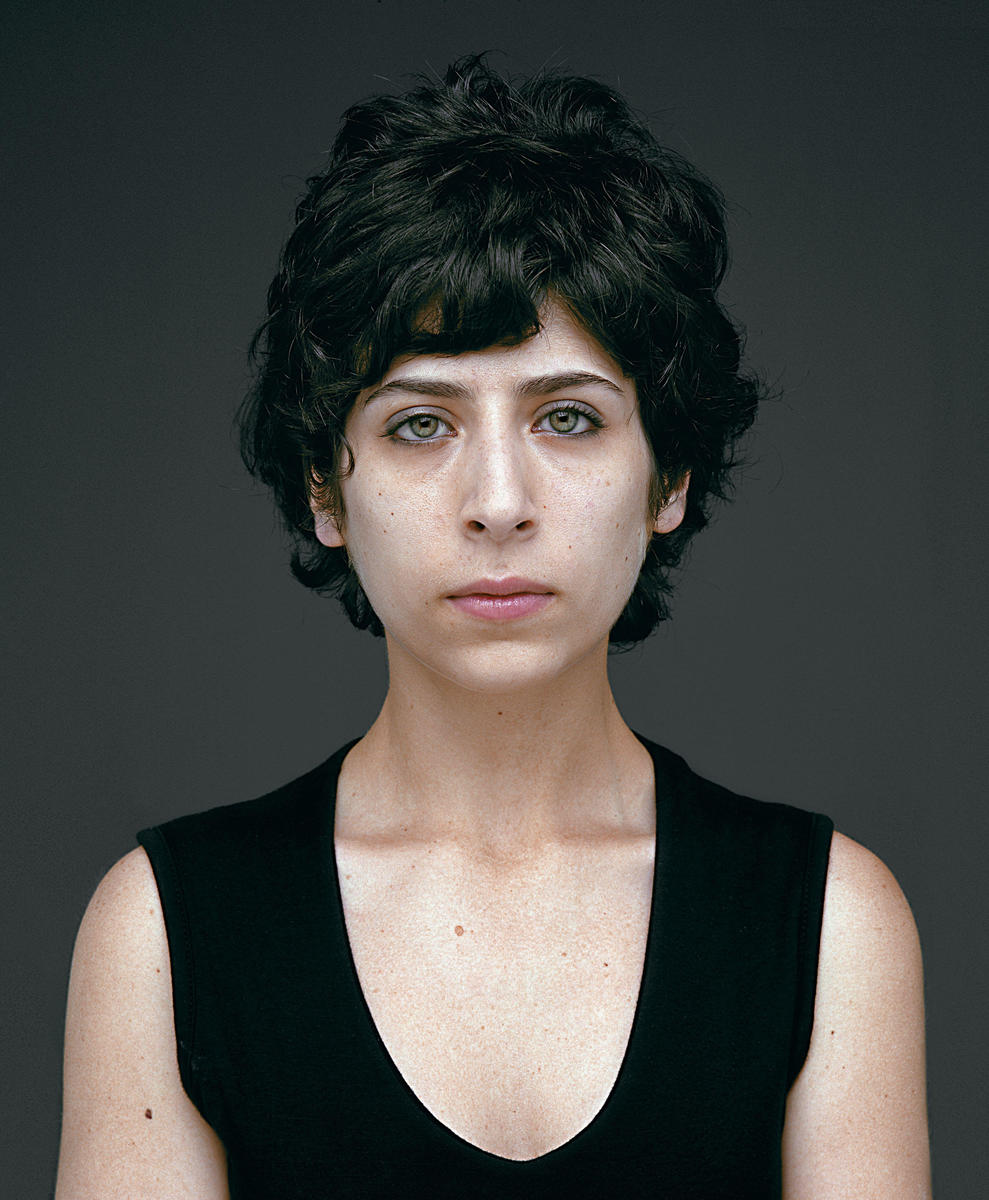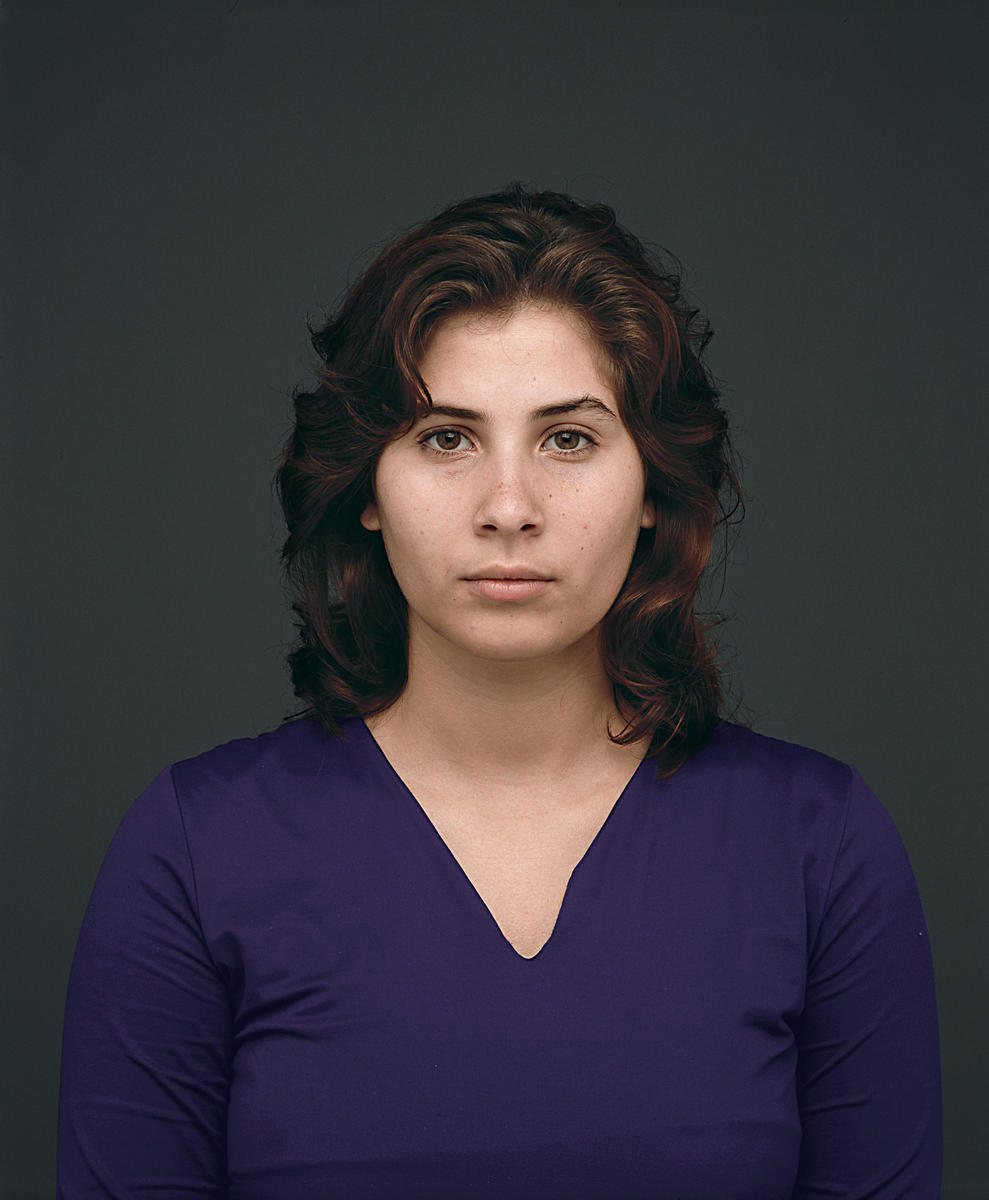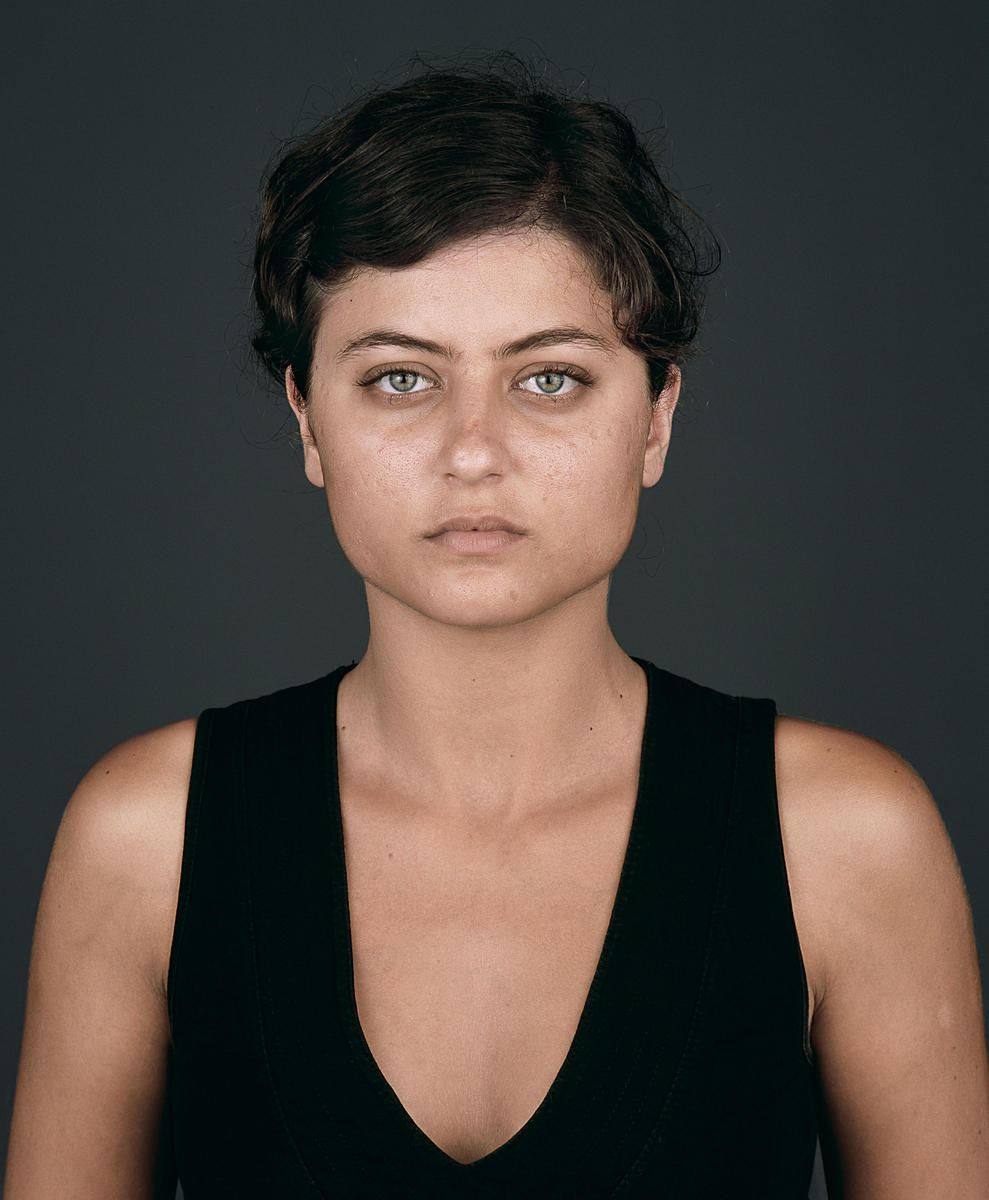
Beirut
Gilbert Hage: Ici et Maintenant
Espace SD
November 4–20, 2004
In his most recent exhibition, Ici et Maintenant, at Beirut’s Espace SD, photographer Gilbert Hage has set out to create a visual atlas of post-war Lebanon — one thousand portraits of Lebanese subjects between the ages of eighteen and thirty.
“The young people in the portraits of Gilbert Hage all hold the same pose,” writes Lebanese poet Abbas Beydoun. “Yet there are no two that look the same. Needless to say there are no two among them with the same ideas. This single pose… further highlights their difference, as their association depends wholly on the camera and the photographer’s will. At the end of the day, nothing remains of this staged resemblance.”
Beydoun’s ruminations upon the image and reality were read at the November 3 launch of Ici et Maintenant. They provided a fitting complement to Hage. An artist of portrait and cityscape for fifteen years, his works have been exhibited in Sao Paolo and Paris as well as Beirut and Damascus. He lives in Beirut, teaching photography at the Academie Libanaise des Beaux Arts and the Universite de Saint Esprit de Kaslik.
Ici et Maintenant is both slight and substantial. Slight because the body of work on display is made up of only eight portraits, substantial not only because they are part of a much larger project, but because of the sheer scale of the images. The portraits of Halim Sabbagh, Rasha Kahil, Jad Eid, Karen Safi, Yves Atallah, Hala Dabaji, Sara Saliba, and Charbel al-Fakhry are upwards of three times the size of the originals.
It is tempting to regard the images as over-sized passport photos. Given the emigration rates among Lebanese youth, the comparison is not without weight — indeed Beydoun draws upon the image of the passport photo as an ambivalent signifier of identity.
Virtually as much meaning can be derived from the social, cultural and political context of the portraits — or their subjects — as the technical precision and artistry of the portraits themselves.
The artistry, the confluence of technique, image quality and scale, can be startling. The representation of the eight subjects is systematic — the only difference coming in the lighting reflected in their irises. All eight engage the lens in an attitude bereft of overt expression. It cannot, however, be mistaken for repose.
Different as they are physically, the subjects’ faces bare residues of mood that are just as distinct. It is these subsurface tensions, which accentuate the differences between one “expressionless” visage and another, that render the exhibition so engaging.
Hage knows that a portrait has the potential to be the most deceptive marker of identity. He writes in his notes to Ici et Maintenant that he is struggling against “the myth of the photographic portrait that unveils the soul and reveals the profound interior of Man.”
“Human expressions,” he writes, “are culturally defined and structured socially.” No surprise, then, that he regards the different “subsurface tensions” of the portraits to be less emotional than cultural.

“What they lived before,” he says. “What they were before, where they’re coming from. What each person is in his portrait is the result of this culture and his lived background of twenty-to-thirty years.”
Hage’s “culture” is something more varied and nuanced than the reified kitsch — the tabbouleh, dabkeh, and triple-arched arcades — that are usually served up as Lebanese culture.
“What is ‘Lebanese culture’? That’s precisely my problem. That’s the project,” he laughs. “I don’t think there is a ‘Lebanese culture.’ There is culture in Lebanon, but I don’t know how to define Lebanese culture. It’s a mélange, a blend of elements. It varies from individual to individual, depending on if you’ve lived abroad for five years, ten years, two years, or if you never lived outside of Lebanon.”
This variety is mirrored in the portraits. In the intimate space chosen for the Beirut launch, the portraits’ 3-1 scale accentuates the range of eye color — from deep brown to green — skin tone and hair texture.
Certainly the portraits defy any racial stereotypes the viewer might harbor about this place. It is also vanity’s worst nightmare. Every blotch and furtive wrinkle, every eyebrow hair that defies convention, stands petulant before the viewer, and the subject.
Indeed the launch is made all the more intriguing by the fact that Hage’s subjects have been assembled for the occasion. It is a curious voyeurism, looking on as one of these young people approaches himself or herself, and leans forward to examine the amplified self. Facial hair is dense thicket, otherwise discrete veins on the arms are elevated to the status of rivers.
A young woman — one of the two whose portraits have a slightly disheveled left eyebrow — runs fingertips over her eye sockets with automatic hand.
The effect is indeed like looking upon a series of maps and Hage characterizes this project as an exploration of the geography of the person, one that renders his subjects so that the portrait conveys the sum of the parts, the varied geography of face and being.
The map is a suitable metaphor not only for the style of the portraiture but for the subjects Hage has chosen. The face of post-war Lebanon that he wants to capture is one that looks outside as much as in. So it is that, aside from age considerations, he classifies his subjects as “people with intelligence, who are doing something.”

These eight faces, and the 992 that he hopes will follow, are part of a globalized culture that will “actualize” Lebanon. The photographer wants to break down the stereotypes of “Arab culture” — whether it be that of camels and gazelles or gunmen, explosions and sheikhs, stock images that might have been generated during the Lebanese civil war, then later ascribed to Iran or Palestine or Iraq.
“And yet some,” writes Beydoun, “would like to identify with their image, identifying themselves, their community, their nation or their people, with one single image. This desire, owing nothing to reality, sometimes succeeds in eclipsing it. Can an abstract idea or an artificial image be more powerful than reality?”
“It’s a part of globalization that the West doesn’t know,” says Hage, “or refuses to know or doesn’t have the chance to know. If you know Lebanon through the media only, it’s not the real Lebanon. It’s not my Lebanon, not the actual Lebanon I want to show.”